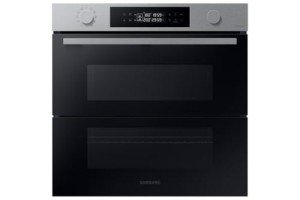Built-In Ovens in the UK: A Comprehensive Guide
Built-in ovens have actually become a vital function in modern-day cooking areas throughout the UK, offering both functionality and design. They are developed to fit seamlessly into kitchen cabinets, using a streamlined and integrated appearance that complements contemporary kitchen designs. This post checks out the advantages of built-in ovens, the various types readily available, key features to consider, and frequently asked questions that will assist customers make informed choices.
Benefits of Built-In Ovens
Selecting a built-in oven features many advantages, which consist of:
- Space-Saving Design: Built-in ovens are created to fit within kitchen cabinetry, making them ideal for smaller sized areas where free-standing systems may take up too much space.
- Visual Appeal: These ovens offer a clean, contemporary look that improves the general appearance of the kitchen. They can be positioned at eye level, making them available while decreasing bending or bending.
- Integrated Technology: Many built-in ovens come geared up with sophisticated cooking innovations, consisting of convection cooking and self-cleaning features, making cooking more effective and hassle-free.
- Increased Resale Value: A contemporary, elegant kitchen with built-in appliances can significantly increase a home's resale worth, making it more attractive to prospective buyers.
- Variety of Options: Built-in ovens can be found in different sizes and styles, permitting property owners to choose one that fits their particular kitchen layout and cooking needs.
Types of Built-In Ovens
Built-in ovens are offered in different configurations, each catering to different cooking designs and choices. Here are the primary types:
| Type of Built-In Oven | Description |
|---|---|
| Single Ovens | These ovens feature one compartment, normally suitable for general baking and roasting requirements. |
| Double Ovens | Including 2 compartments, double ovens enable synchronised cooking at different temperature levels, making them perfect for large families or those who regularly entertain visitors. |
| Mix Ovens | Integrating a conventional oven with a microwave, these flexible systems conserve space and time, permitting for quick heating and cooking. |
| Steam Ovens | Using steam cooking innovation, steam ovens are perfect for healthy cooking, maintaining wetness and nutrients in food while offering a special cooking method. |
| Wall Ovens | Set up higher up in the kitchen, wall ovens can be single or double. They allow simple access while freeing up area on the counter. |
Key Features to Consider
When choosing a built-in oven, it's important to examine particular functions. Customers need to think about:
- Size and Capacity: Determine the space available in your kitchen and pick an oven that fits conveniently without frustrating the design.
- Energy Efficiency: Look for ovens with higher energy ratings, as they can save money gradually and are more environmentally friendly.
- Cooking Functions: Different ovens come with various cooking modes-- such as baking, grilling, and rotisserie. Assess which operates accommodate your cooking style.
- Control Options: Newer models often feature touch controls, digital user interfaces, and wise innovation that permits for remote operation through mobile phone apps.
- Self-Cleaning Features: Many built-in ovens featured self-cleaning alternatives, considerably simplifying oven maintenance.
- End up and Design: Choose surfaces-- like stainless-steel, black, or white-- that enhance the total kitchen visual.
Popular Brands in the UK
A number of brand names dominate the built-in oven market, each offering various features and rate points. Some of the most popular choices consist of:
- Bosch
- Siemens
- Neff
- Samsung
- Hotpoint
- AEG
- Miele
These brands are understood for their reliability, innovation, and client service, making them a relied on choice for consumers.
Often Asked Questions (FAQs)
1. Are built-in ovens more expensive than freestanding models?
Built-in ovens tend to be more pricey than freestanding models due to their custom-made sizing, styling, and advanced functions. However, they offer greater worth in terms of visual appeals and performance.
2. Can I install a built-in oven myself?
While some useful property owners may try a DIY installation, it is often recommended to hire an expert to make sure proper setup, especially concerning electrical and plumbing connections.
3. How do I clean my built-in oven?
Lots of built-in ovens featured self-cleaning choices, which significantly decrease the effort needed. For models without this function, routine cleaning with non-abrasive cleaners and a soft cloth is important for maintenance.
4. What is the average life expectancy of a built-in oven?
Typically, built-in ovens can last in between 10 to 15 years, depending upon usage and maintenance. Regular servicing can assist extend the appliance's lifespan.
5. Can I change a built-in oven with a various brand name?
Yes, built-in ovens can typically be replaced with any compatible model, however it is important to make sure that the new oven matches the existing cut-out area in the cabinets.
Built-in ovens provide an advanced mix of energy and style, making them an integral part of modern kitchens in the UK. With Built in oven and gas hob packages , unique functions, and a range of choices readily available from popular brands, house owners have adequate choices to pick an oven that meets their cooking requirements and kitchen visual appeals. By comprehending the advantages, types, and vital functions, customers can make educated choices that enhance their cooking experiences. Whether for day-to-day meals or special occasions, a built-in oven is an investment that guarantees benefit and quality for many years to come.

